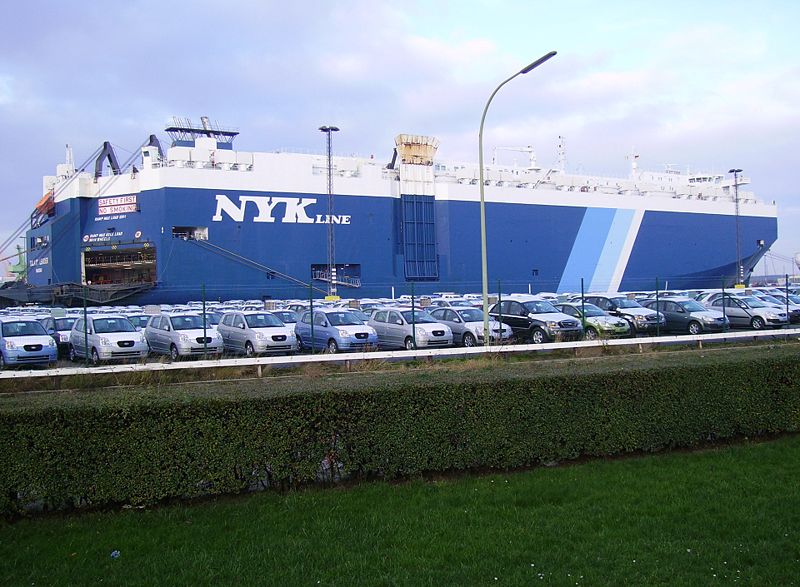Tariffs Are Here: AEG Warns Car Prices Are About to Surge
The administration made tariffs official today. Anderson Economic Group says your next car could cost thousands more—unless something changes.
April 2nd, 2025
You may also like: Real-Time Tracking Already Detects Shifts in the Auto Market


The speculation is over. Today, the Trump administration confirmed that its sweeping new auto tariffs will officially take effect at 12:01 a.m. Thursday, slapping a 25% duty on all global imports of cars and trucks. Tariffs on automotive parts will follow a month later, kicking in on May 3. The announcement, published in a detailed Federal Register notice, spells out the scope of the tariffs and gives the Commerce Department 90 days to expand the list of affected auto parts, especially at the request of U.S. manufacturers.
The initial list already includes critical components: engines, transmissions, powertrains, and electrical systems, as well as parts like brake hoses suggesting that no corner of the industry is going untouched. While the White House emphasized that vehicles meeting USMCA rules of origin can limit the duty to only their non-U.S. content, that fine print won’t shield most American buyers from higher prices.
Today’s confirmation wasn’t just a policy marker—it was a green light for a price shock that’s been looming for weeks. Now, with tariffs sort of locked in, American consumers are about to feel the real-world consequences in dealerships, repair shops, and household budgets. And if Anderson Economic Group’s latest analysis is right, the cost is going to be brutal.
Tariffs in Theory vs. Tariffs in Reality
There’s always a tidy theory behind tariffs: protect domestic industry, create American jobs, get tough on trade partners. It all sounds good on paper. But as AEG’s detailed breakdown makes clear, the impact of these tariffs hits consumers first and hardest. And the worst part? You don’t even have to buy a foreign car to feel it.
AEG analyzed a broad range of vehicles that people think of as “American”—Chevy, Ford, Chrysler, Toyota, Honda, even Tesla. Many of these are built right here in the U.S. But because modern car manufacturing is a tangled web of global parts and supply chains, even those “Made in America” badges come with a heavy tariff cost. According to AEG, the lowest-tariffed American-assembled cars will still go up by $2,500 to $5,000. And that’s just the starting point.
If you’re eyeing a midsize SUV or a pickup truck—some of the most popular vehicles in the country—you’re probably looking at a $5,000 to $8,500 price hike. Want a large SUV or an electric vehicle? Prepare for $10,000 to $15,000, or more. And if you’re a fan of European or Asian imports? The impact balloons to $20,000 extra on some models. That’s not a price increase—it’s a down payment on another car
Who Pays the Price?
It’s easy to assume that companies will eat some of these costs—and AEG acknowledges that in the short term, some manufacturers probably will. But let’s be real: car companies are not charities. Over time, they will shift nearly all of these costs onto the customer. The car you want will either cost more, be harder to find, or disappear from the market entirely.
And here’s where it gets personal. If you’re living paycheck to paycheck, if you’re trying to get your kid to school or make it to your shift on time, your choices just got a lot harder. New cars are already expensive—the average price in early 2025 is hovering around $48,000. Tariffs could push that average well past $50,000, even for vehicles assembled domestically. In other words, tariffs are inflation for the working class, dressed up as economic patriotism.
And don’t forget the ripple effect: used cars will get more expensive too. As new cars get priced out of reach for many buyers, demand for used cars will skyrocket, and so will their prices. That might be good news if you’re selling a car—but not if you’re trying to replace one.
One of the more subtle consequences highlighted in the AEG report is that manufacturers may stop importing certain models altogether. Low-volume cars that already operate on thin margins may be deemed not worth the trouble. That means fewer choices on the market. Trim levels and feature combos could be simplified or eliminated to avoid complex and expensive sourcing. In short, we’re going to get less variety and more vanilla.
Consumers who used to shop across brands for the best mix of performance, reliability, and price are going to be funneled into narrower lanes. That’s not how competition works—and it’s certainly not how prices come down.
The $30 Billion Question
The White House claims these tariffs could generate $100 billion in revenue. AEG isn’t convinced—and honestly, neither should we be. Even if that figure holds (which is doubtful), the trade-off is steep: American consumers and industry workers are expected to absorb $60 billion in costs during just the first year. That’s a painful exchange, no matter how you frame it.That’s not smart economics. That’s not a targeted trade strategy. That’s a wealth transfer—from American families to the federal government, to foreign retaliatory tariff collectors, and to no one who’s going to help you pay your monthly car loan.
Yes, some production may shift back to the U.S. That’s the hope. But that takes years, billions in investment, and a highly trained workforce that’s already stretched thin. In the meantime, manufacturers will scale back offerings, dealerships will struggle with reduced inventory, and consumers will hold off on purchases—slowing the auto market, not reviving it.
Even worse, the backlash is coming. Canada, Mexico, and the EU are expected to hit back with tariffs of their own. This doesn’t end with cars. It spills over into agriculture, manufacturing, and more. That’s not leverage—it’s economic trench warfare.
What Now?
If you’re a consumer wondering what to do, AEG’s advice is blunt: buy now if you can, and hang on to your used car if you can’t. That’s not investment advice—that’s survival advice. This policy is going to squeeze every segment of the market, and it’s the middle and working class who will feel it most.
For policymakers, this is a moment to rethink. If the goal is to strengthen domestic auto manufacturing, tariffs may not be the best tool in the box. Targeted investment in EV infrastructure, support for re-shoring key components, and smarter trade agreements might serve the same ends without handing American consumers a $30 billion invoice.
Anderson Economic Group’s analysis pulls no punches: this isn’t just a policy with “side effects.” It’s a full-on price surge in one of the most essential sectors of American life. If you own a car, plan to buy one, or just want to keep your options open, these tariffs are about to make your life more expensive.
So the next time you hear someone say tariffs are about punishing foreign automakers or reviving American factories, ask them who really pays the bill. Because when it comes to auto tariffs, the road to protectionism is paved with consumer dollars—and we’re all getting stuck with the toll.



Copy link to clipboard